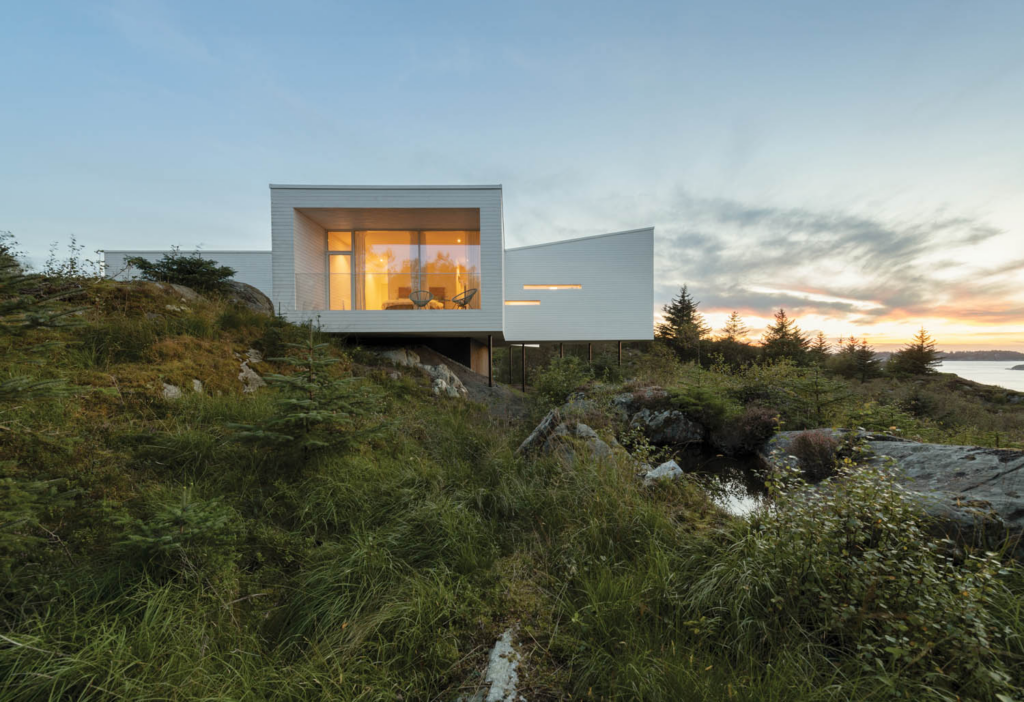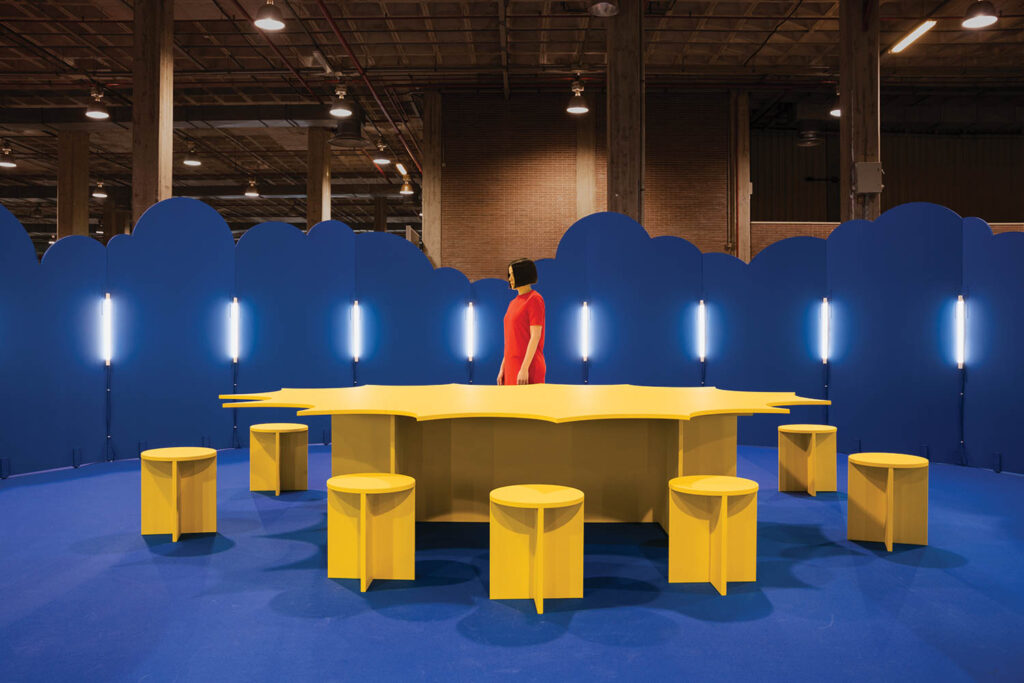
This Experiential Photography Studio Captures The Imagination
Typically, a photography studio is all about control—of light, sound, foot traffic, and any unwanted visual distractions. However, for Lanwuu Imagine in Kunming, the capital of Yunnan, China’s most southwestern province, Xuewan Yang, founder of and chief designer at local firm Aurora Design, created a studio that instead welcomes spontaneity. With a ground-floor café and art installations visible through playfully shaped windows, the facility is conceptualized as both a public living room and a professional-level space for photo shoots, allowing passersby to interact with an architectural typology usually known for its exclusivity.
Yang’s portfolio encompasses private residences along with retail and award-winning teahouse projects, the latter focused on creating a consumer experience defined by heightened aesthetics and engagement. As Lanwuu specializes in wedding and wedding-dress photography—Yang has also completed studios for Chinese wedding photography brands Mushi and W. Dresses—as well as portrait sessions, Yang was the ideal candidate to deliver a “complete transformation from the typical,” she says, an open-arms approach to the public.


The 4,300-square-foot location takes inspiration from its novelty as an industrial space situated in a residential neighborhood. Using construction as a conceit and an allusion to Lanwuu’s innovation, one facade features a branded stainless-steel screen supported by pink scaffolding; another has a large bifold window, referencing a garage door. Inside, Yang left the shell of the two-story building mostly raw, with concrete floors and walls and exposed ceilings. To delineate between the studio’s public and private zones, she employed a rough-luxe material palette of concrete, marble, metal, and velvet, contemporary furnishings, and site-specific architectural interventions—the latter two in more pink or other flattering pastels.
Based on their visit’s purpose, patrons can enter directly under the scaffolding and into the studio or via a circular portal, formulated to appear like a camera lens. The portal leads to the coffee bar featuring cabinetry in marine-grade birch and built-in magazine racks, which warm the adjoining catering kitchen in stainless steel and concrete. Beyond the loose, flexible arrangement here of round café tables and tubular-steel and blush shell chairs for sipping drinks and chatting is the studio’s VIP consultation area. Another nod to photography, it’s contained inside a tall, framelike structure, tilted so it’s asymmetrical and clad in butter-yellow tile, furnished with upholstered lounge seating. A mirrored wall—one of those concealing the photo studio itself—behind this semi-enclosed vignette enhances this commercial area’s cinematic feel. Black-and-white striped area rugs add graphic punch.

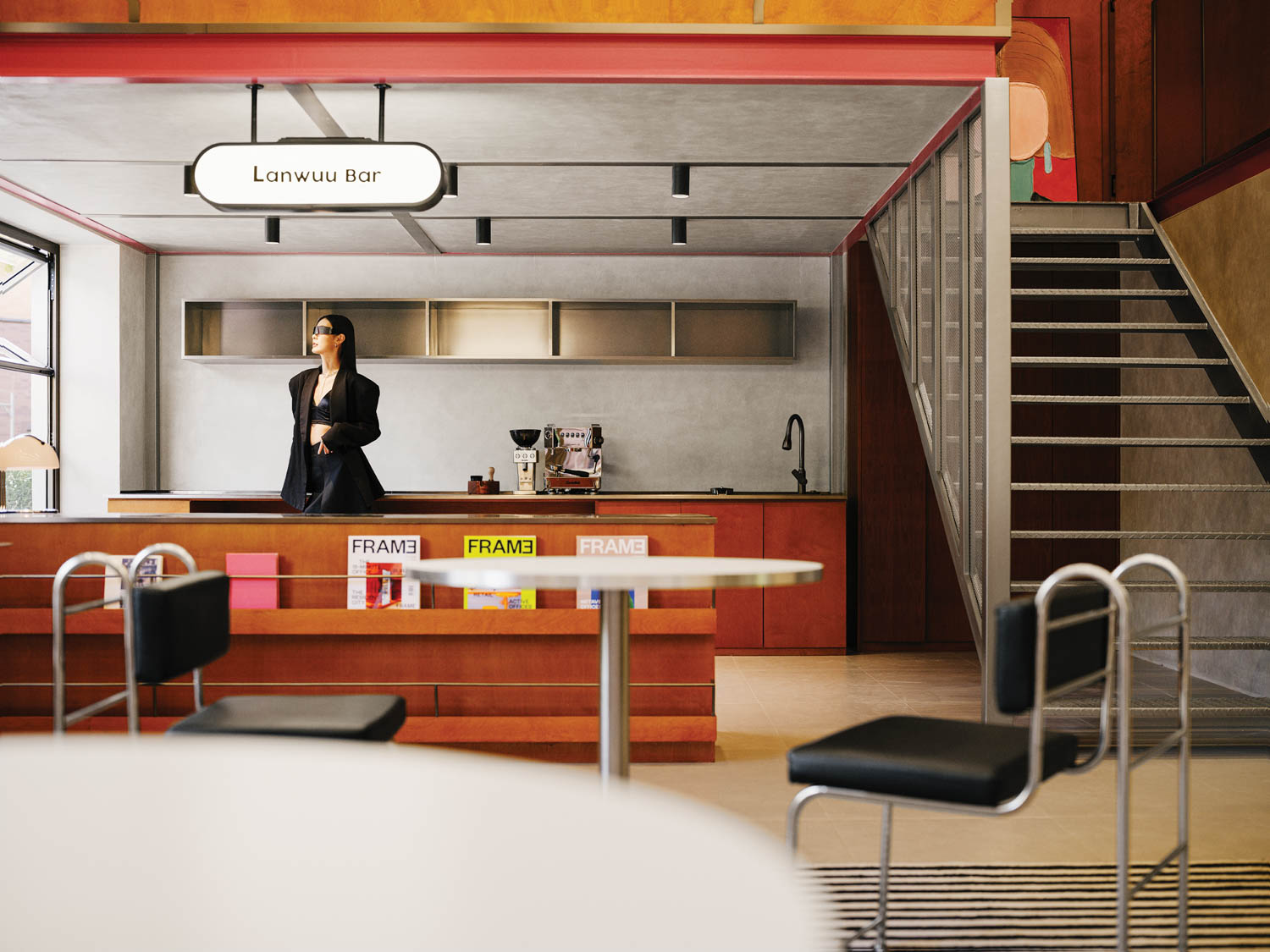
“Trompe l’oeil techniques create a sense of depth,” Yang explains of her interventions. “By using reflective materials such as stainless steel and mirror glass, and strategically placing lighting, the boundaries between different areas are blurred, giving the illusion of a larger, more open space.”
These techniques might trick the eye, but they also draw it closer. The studio’s lobby connects to the café by a narrow hall paneled in polished stainless steel with retractable garage door–style shading. In the lobby, a cylindrical light box is the centerpiece. Floored in rose carpet, wrapped in burl-patterned wood veneer, and capped by an eyeball-esque fixture, the space is used to hang and photograph wedding dresses. But, since it’s visible to the public through a streetside window, Yang upped the visual draw with unusual installations of stacked TVs and an equine sculpture with hay. “The dazzling light, the black horse, the small TVs—they achieve a sense of temporal confusion, creating effects that are both virtual and realistic,” says Yang, who sourced the unexpected props from a local flea market.


It may all feel a bit fantastical, but the designer’s concept argues that that is the point: Capturing emotional portraits first requires creating an environment of fantasy with clients on set. This also necessitates that the subjects look and feel their best. Thus, the studio’s makeup and dressing rooms, which feature plush carpeting and Japanese-style partitions, are reminiscent of residential interiors, intended to evoke the same sense of comfort as trying on clothes in one’s own bedroom. The coffee bar’s similar living-room vibe contributes to that cozy atmosphere. And while the photo shoots ultimately take place inside the private, black-boxlike space at the center of the building, Lanwuu’s overall layout creates ideal conditions for informal snapshots, too.
“The studio is open and flowing to facilitate the movement of natural light,” Yang explains. “By avoiding excessive partitioning, we ensure that natural, balanced light can penetrate all corners.” Playing with allusion by geometry, she designed circular windows that not only look like camera lenses but also simulate their aperture ability to diffuse and manipulate sunlight. All other openings are adjustable as well, offering flexibility throughout the day and as needs change. Back-of-house functions, including the administrative offices and image-processing facilities, are located on the second floor, to maintain the accessible feel.


Lanwuu is inherently a work in progress. “We want the project to convey this pursuit of momentary beauty and warmth,” Yang continues. As those definitions change through differing trends, preferences, and needs, so too must the sets where they are captured. Being “unfinished” is an advantage—one Yang has built into the design.
Inside Lanwuu Imagine, a Photography Studio in Southern China


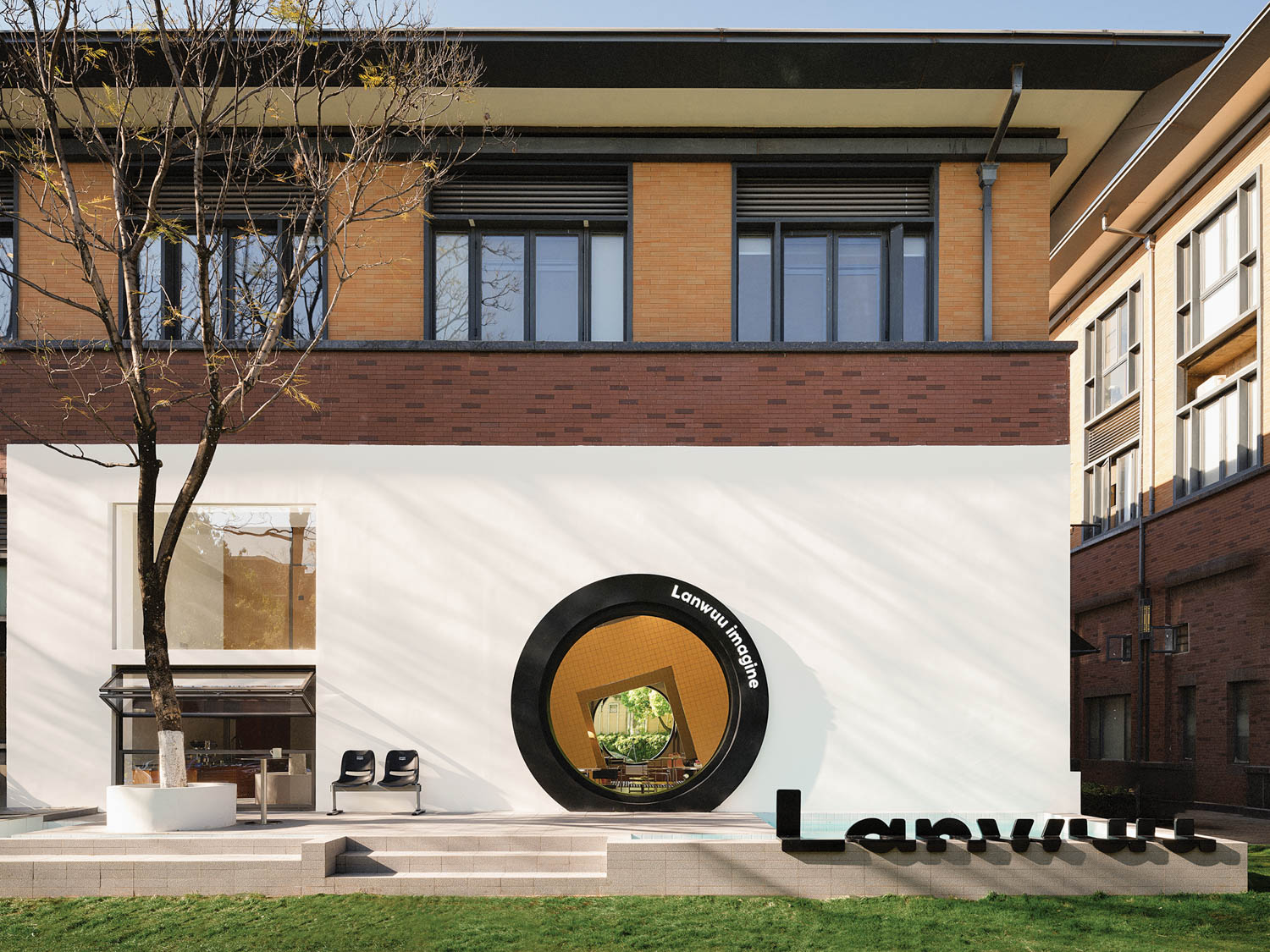









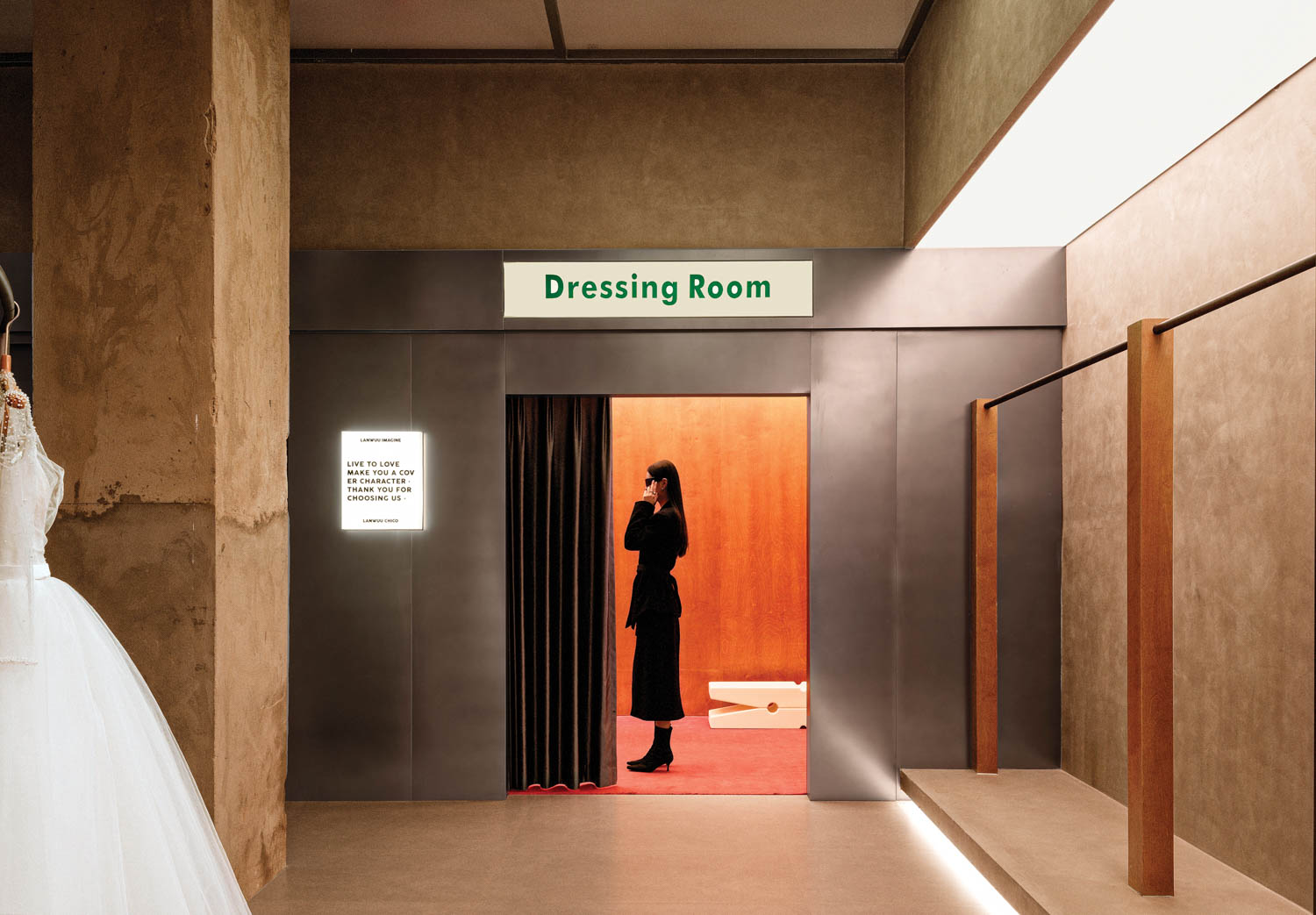






<strong>PROJECT TEAM</strong>
AURORA DESIGN: DA WANG; SIJIE ZHANG.
PRODUCT SOURCES
FROM FRONT DP STUDIO: TUBULAR CHAIRS, TABLES (CAFÉ). SWHY FURNITURE: SEATING (VIP). TAOBAO: LAMPS.
THROUGHOUT QIANGLI JUCAI: LED SIGNAGE.
read more
Projects
7 Offices Prioritize Community + Collaboration Through Design
Whether stateside or abroad, these energizing and inspiring offices have made providing creativity- and community-inducing spaces job number one.
Projects
Take To The Skies With Supernal’s 3 California Locations
For startup electric-aviation company Supernal, RMW created three separate California campuses, each tailored to its particular workforce and locale.
Projects
WilmerHale’s New Office Design Reflects a Shift in Its Culture
LSM’s relocated Washington headquarters for law firm WilmerHale both unites staffers, and showcases transparency, blue-chip art and repurposing.
recent stories
Projects
Soak In The Magic Of This Midcentury Palm Springs Retreat
Discover how Studio BV melts away all indoor and outdoor boundaries with lush greenery and contemporary art for a dreamy Palm Springs abode.
Projects
Ascend To New Heights At This Contemporary Norway Haven
Saunders Architecture crafts a stunning 3,000-square-foot modern retreat that doubles as a breathtaking observatory overlooking the North Sea.
Projects
Get Electrified With This Comic-Inspired Installation
Dive into Cloud, Clap’s knock-out installation for Salón del Cómic de València, that takes inspiration from comic culture and Roy Lichtenstein paintings.









